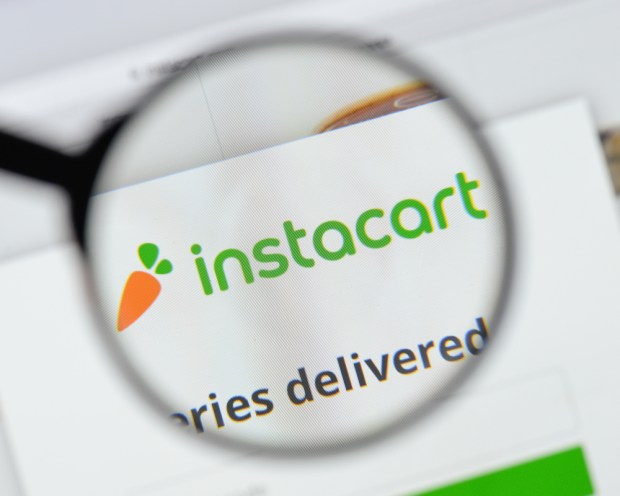Instacart Builds A Coalition To Compete In Grocery’s Future

Instacart captured a lot of headlines earlier this month with the news that, for a limited time, it would be cheaper to get one’s Whole Foods grocery delivery through them, rather than joining Amazon Prime.
Instacart dropped its delivery fee from $5.99 to $3.99 per order of $35 or more, with the 5 percent service fee and $3.99 default delivery fee still intact. A subscription to Instacart Express has also gone down in price to $99 per year compared to $149, and it offers unlimited free grocery delivery on orders of $35 or more with no service or default delivery fee. Monthly Express membership is $9.99. All orders are promised within two hours.
Amazon Prime offers two-hour delivery of groceries from Whole Foods for free, and one-hour delivery for $7.99 on orders of $35 or more. An Amazon Prime membership costs $119 annually or $12.99 per month.
“We’ve made grocery delivery more affordable. … Let our personal shoppers take care of your grocery shopping while you save an hour or two,” the grocery eCommerce service said in an email.
The comparison, of course, isn’t exactly apples to apples. An Instacart subscription offers up grocery delivery, while a Prime subscription is connected to a series of other perks, like free two-day delivery from Amazon and content streaming. If one’s interest lies in two-hour grocery delivery, Instacart is making the better price offer.
And the pricing change isn’t the only new arrow in the delivery services quiver as it takes on a landscape crowded with large players (like Amazon and Target-owned Shipt) and with other startups like DoorDash. According to the firm, Instacart’s delivery service is more accessible, spanning “more than 70 percent of U.S. households,” with over 300 retailers and 15,000 locations in all 50 states.
The goal, according to Instacart, is to reach 80 percent of households by the end of next year.
In pursuit of that goal, Instacart just announced that its new grocery pickup service will launch in cities across the United States, in many cases alongside Instacart’s delivery service. Wegmans, Aldi, Cub Foods, Food Lion, Price Chopper, Publix, Schnucks, Smart & Final, Sprouts and Tops Friendly Markets are all among the 200 retailers with which the pick-up service is launching.
The delivery firm has also been raising funds prodigiously this year, amassing nearly $1 billion, most of it in an $871 million Series F round, bring the firm’s valuation to $7.8 billion. Those funds will go toward, among other things, doubling the size of the company’s engineering team by the end of 2019.
The push, according to Nilam Ganenthiran, Instacart’s chief business officer, comes as Instacart is trying to carve out a new role as the grocery industry ally in staying current in the era of Amazon.
“Quite simply, our grocers want to win, and they want to win in a world where you have competitors like Amazon coming. They look to Instacart to be able to arm them with the latest technology, so they can focus on what they’re good at,” he said. “We’re partnering with them to take advantage of the strength they have: Stores near where customers live that carry what they want to buy, with deep relationships and a level of trust and personal nature that you can’t get from a large warehouse operation. The way we see it, we’re at the beginning of a big monumental shift in grocery.”
And Instacart has been picking up increasing allies in that monumental shift, adding to the number of grocery partners by 50 percent.
That data, notes Ganenthiran, builds the foundation for Instacart’s relationship with its partner shops. The goal for the firm is to take the cross-competitor, multi-regional view of consumer data that they alone have, process it along with extra insights, and then feed those insights back to their retailer partners as quickly as possible. Instacart’s success rides on the success of its partners, which means it is in their best interest to help those partners make better inventory decisions and offer superior product experience.
“Customers have particular tastes, and they will reward the retailer that responds to that. That will be the expectation going forward in grocery — you have to understand the customer down to the micro-level. That is extremely hard to do, but we are building the technology and the team to do it,” said Ganenthiran. “The other expectation is going to be seamless interactions, whether it’s delivery or a trip to a store, the grocer will be expected to know the last 10 trips. We want to arm our retailers with information and use the data from in-store environments to inform the online experience, and vice versa.”
